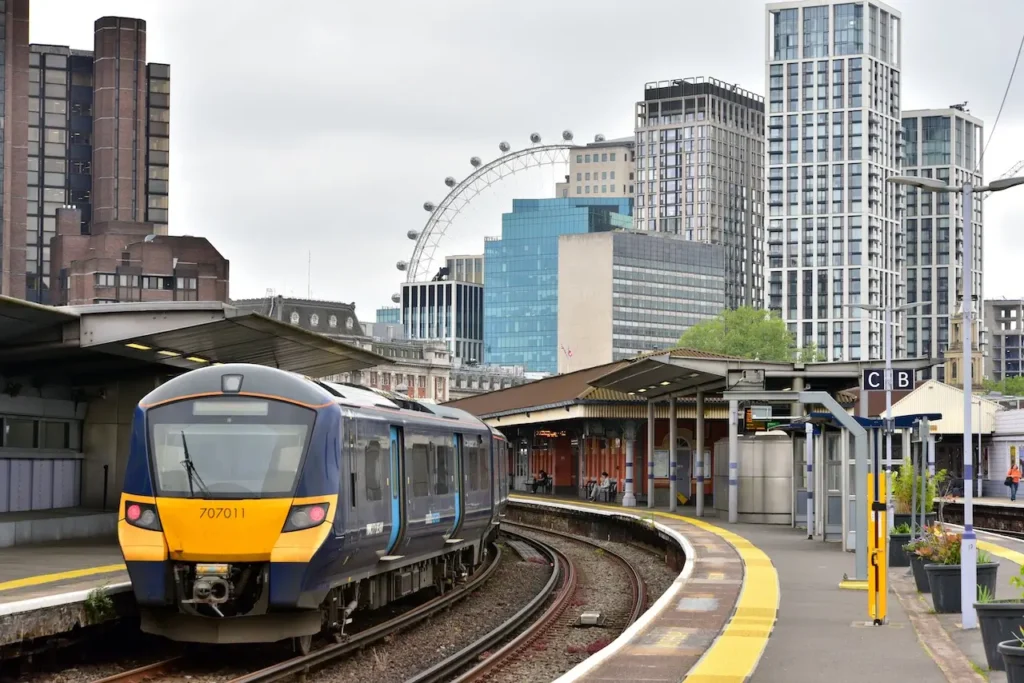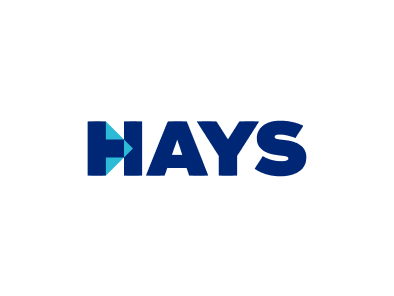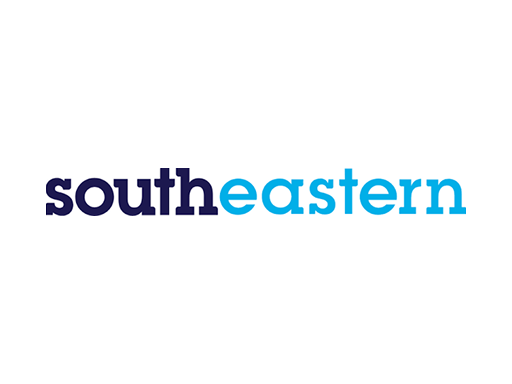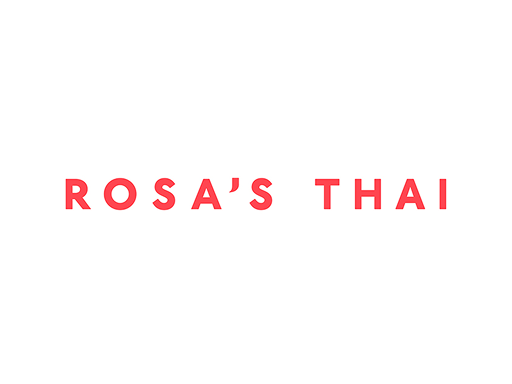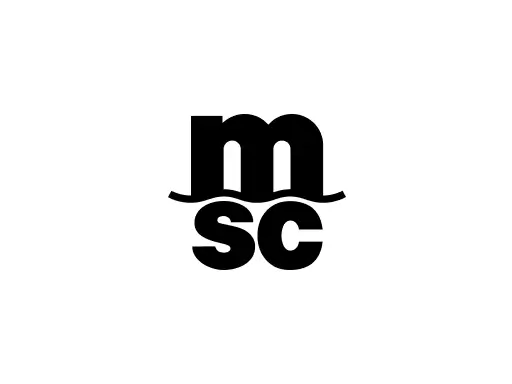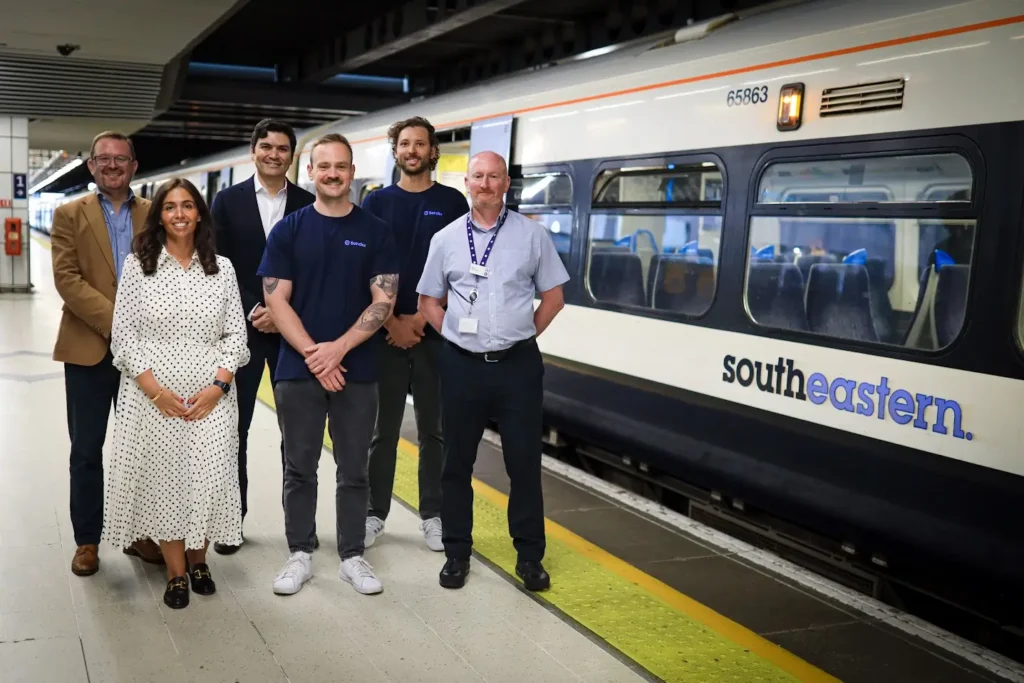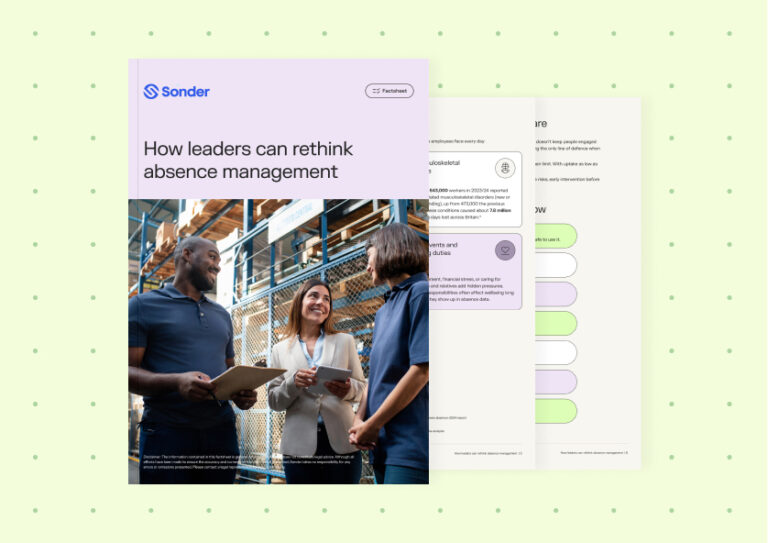
“From providing reassurance to the parent of a sick child in the middle of the night, securing a GP appointment or helping a colleague achieve a healthier worklife balance – the 24/7 support available is a real game-changer for our staff. By providing a single point of entry, without any time or qualifying restrictions, our people are getting the right support at the right time – creating a happier and healthier workforce in the process.”

Head of Wellbeing at Hays
Reduce employee absence
Help employees recover faster and return to work safely
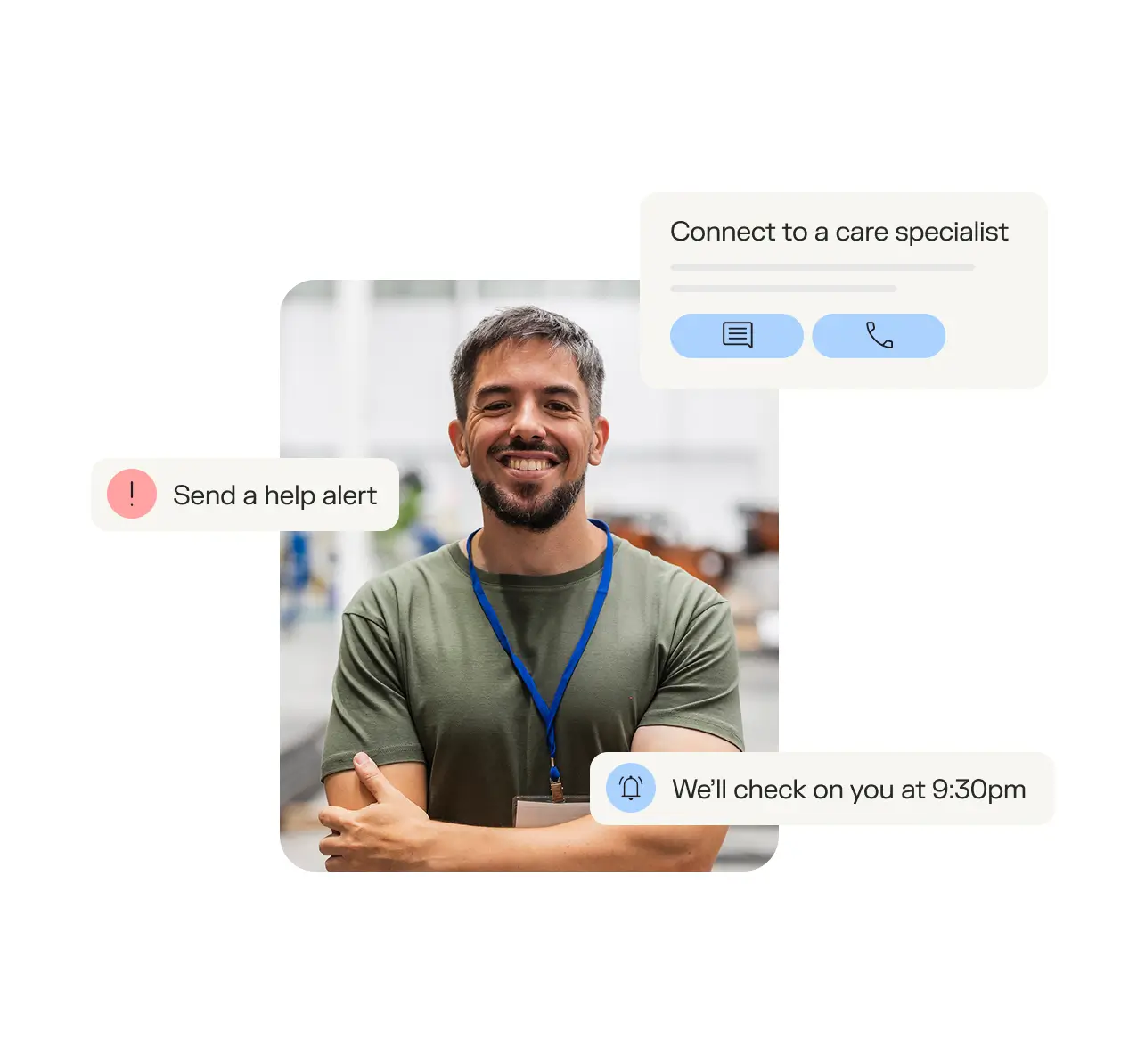



Proactive care that keeps people at work

Faster access to trusted support

Clinically governed, human-centred care

Operational continuity and measurable ROI

“Sonder integrates preventative, data-led care directly into our operations, cutting response time, reducing risk and strengthening workforce resilience, In a service such as ours, this is about precision, continuity and delivering every day; our partnership with Sonder allows us to do that for both our people and passengers.”
“We needed a partner who could help us deliver impactful support while offering flexibility, measurable ROI, and a modern experience our employees would genuinely value. Sonder delivers on all fronts.”
A more proactive model of absence management


Customer aggression on the rise
Sonder research found that 29% of workers who experienced customer aggression didn’t receive any support from their employer, and only 24% of respondents were given the opportunity to talk through the incident. Suggesting that some businesses are struggling to cope with this rise in hostility.
Perhaps unsurprisingly, survey respondents in customer-facing roles were more likely to take unplanned days off than those in non-customer facing roles. This indicates the toll customer hostility takes on the individual, and the ripple effect on businesses which can include, absenteeism, psychosocial risk and turnover.
- 0%of employees in customer-facing roles experience customer aggression every week, or more
- 0%of employees in customer-facing roles experience customer aggression as part of their job
- 0%of users rate Sonder safety notices as helpful
See how Sonder has helped other organisations transform their wellbeing approach.
Protect your frontline
How can you reduce employee absenteeism?
Reducing absenteeism isn’t easy. It requires a proactive and compassionate approach that balances the needs of your employees with the demands of your organisation. Here are some effective strategies to minimise absenteeism at work:
- Provide holistic support: Address the root causes of absenteeism with 24/7 access to medical, mental health, and safety support.
- Foster engagement: High employee engagement reduces absenteeism by creating a supportive and inclusive workplace culture.
- Track absenteeism rates: Use an absenteeism formula to measure and monitor trends, helping you identify patterns and take action.
- Promote wellbeing: Encourage preventative care and early intervention to minimise unplanned leave.
- Define clear policies: Ensure employees understand the definition of absenteeism and the importance of attendance, while also feeling supported when they need time off.
At Sonder, we make it easier for organisations to implement these strategies and see real results.
Why does reducing absenteeism matter?
Reducing absenteeism in the workplace is crucial for maintaining productivity, morale, and cost efficiency. Frequent absences can lead to:
- Increased costs: Covering for absent employees often means paying for overtime, temporary staff, or lost productivity.
- Lower morale: When team members have to pick up the slack, it can lead to frustration and burnout.
- Reduced retention: High absenteeism rates can signal deeper issues, such as disengagement or poor workplace culture, which may drive employees to leave.
By reducing absenteeism, organisations can create a more positive, productive, and cost-effective work environment.
Why choose Sonder to reduce absenteeism?
At Sonder, we understand that behind every absence is a person who needs support. That’s why we take a holistic approach to reducing absenteeism in the workplace. Here’s how we help:
- 24/7 access: Employees can get help anytime, anywhere, reducing the need for unplanned leave.
- Proactive care: Our services address the root causes of absenteeism, from mental health challenges to safety concerns.
- Early intervention: By identifying and addressing issues early (before they escalate), we can help prevent small problems from becoming big absences.
- High engagement: With a 40% engagement rate, employees actively use our support, driving measurable impact.
- Individual support: We work with organisations to create strategies that align with their goals and values.
When employees feel supported, they’re healthier, happier, and more likely to stay at work. With Sonder, reducing absenteeism moves from being a goal to becoming a reality.
How do real-time alerts and proactive safety notifications work?
Our open-source intelligence technology and human-led analysis anticipate potential risks, notifying members of safety incidents before they escalate:
- General safety notices: Broad alerts provide guidance on public safety concerns in affected areas
- ‘Response required’ safety notices: Urgent messages to members in immediate danger, prompting them to confirm safety. If no response is received, escalation protocols ensure every member is accounted for.
What happens when a critical incident occurs?
When a critical incident occurs, the Sonder team will assess, support, and manage those who are affected in order to ensure that they will receive the right type of care. Sonder’s dedicated Incident Manager will ensure that the response is appropriately resourced and aligned with our clinical governance. This may include in-person or digital support options within the Sonder app.
If in-person support is deemed appropriate following a critical incident, a Sonder Responder will attend the site to provide immediate psychological first aid, as well as identify others affected by the incident and explain to them how they can receive individual support.
Following the critical incident, the Sonder Responder will then work with the Incident Manager to identify and enrol those impacted by the event into a ‘Critical Incident Workflow’, which is a 5-week in-app nurture stream of messages to reinforce the support available to them that was developed in line with clinical best practice for early response to psychological trauma.
What is ‘Track my Journey’ and how does it work?
‘Track my Journey’ is a real-time safety scanning feature that allows you and your people to share your location to the Sonder team so they can keep an eye on you when you’re travelling from A to B. The real-time scanning is performed by real people and is completely confidential. To use ‘Track my Journey’:
- Make sure location services are turned on for the app – This ensures accurate monitoring.
- Tap the ‘Safety’ tab at the bottom of the home screen.
- Tap ‘Track my Journey’
- Enter your destination and select your mode of travel (walking, cycling or driving).
- Continue your trip; the Sonder team will be monitoring you.
- If you go behind schedule or off track, the Sonder team will contact you through the app, by phone or by SMS.
- Once you reach your destination, the Sonder team will send you a message asking you to confirm you’re okay.
If you go off-track, face an unexpected delay, forget or are unable to check in, the Sonder team will do everything they can to ensure your safety. This may include sending assistance to your location if there is cause for concern.
Learn more about how ‘Track my Journey’ works on our YouTube channel.
What is ‘Check on Me’ and how does it work?
‘Check on Me’ is a safety scanning feature within the app that you and your people can use to have a Sonder team member discreetly check-up on you whenever you’re in an uncertain situation or at a time that suits. To use ‘Check on Me’:
- Tap the ‘Safety’ tab at the bottom of the home screen.
- Tap ‘Check on me’
- Select the length of time you think you’ll need, or the time at which you want a Sonder team member to check on you.
- Add in any additional details about the person you’re meeting or where you’re going – this is optional.
- When the time is up, we will check in and ask you to confirm you’re okay. If you need more time, you can use the “snooze” button to extend the session.
Learn more about how ‘Check on Me’ works on our YouTube channel.
